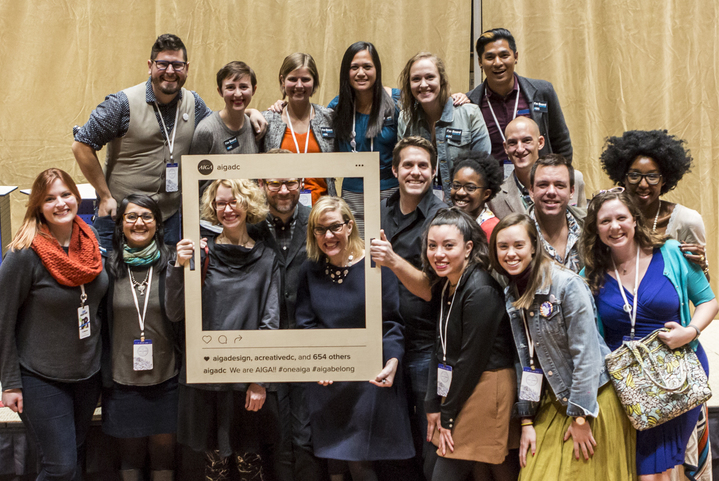As a part of DC Design Week, Debbie Millman brought to life her popular podcast Design Matters at the National Building Museum with guest Abbott Miller. As the packed crowd settled in, Miller joked that he brought green tea Kit Kats from Japan — and originally intended for his daughter — to bribe the audience into asking questions.
Millman eased into the discussion by asking about Miller’s first creative memory. In one memory, Miller recalled moving from his home state of Indiana to New York. Miller had underestimated how much money he might need, and placed the cash in his jacket rather than his wallet — a native trick, Millman noted. When pickpockets realized they’d come up empty-handed, they threw it back in Miller’s face.
During his time as a student at The Cooper Union, Miller foraged around New York to marry found objects and furniture with sculpture, and to paint gesso on canvases. Professors critiqued him by saying, “More lines, more shading.” Miller commented that his fellow students were either formalists or political conceptualists. However, the program’s freedom allowed him to explore design beyond the function of the “gauzy filter of an artist.”

Debbie Millman, Abbott Miller and Ellen Lupton pose with AIGA DC board members at the DC Design Week “Design Matters” event (photo by Bic Vu).
What first comes to mind when you think “designer”? Initially, it might be someone who “makes something pretty,” working with set parameters apart from the content. But Miller’s book Design and Content illustrates that designers have the same tools as writers and editors — plus visual vocabulary. Miller discussed his impressions of design through his editorial and educational work, and suggested that writing is about “making sense back to yourself.”
As the evening progressed, Millman steered the conversation toward Miller’s collaborations with artists such as Yoko Ono, Barbara Bloom, and Matthew Barney. What was it like working with them? Miller recalled that despite their “larger than life” prominence, these artists were eager for help in communicating their work better, and they were open to feedback. Miller detailed the intense process of working on Barney’s book The Cremaster Cycle. Miller and Barney created a narrative for each of the five films with various media — no easy endeavor.
Miller’s most recent collaboration with curator Ileen Gallagher resulted in the Rolling Stones traveling exhibit Exhibitionism, now on its way from London to New York City, opening Nov. 12. Miller said working with the Stones was easy, given how analytical they are towards their audiences. During initial planning, Miller suggested using four songs, but Mick Jagger responded, “No, all the songs!”
One particularly intriguing question from the audience was: How would you maintain artistic integrity in design against metrics of success? Miller replied, “Know what you want to do, and seek out those opportunities. The field of design is wide, and there is a lot of room to invent today.”
…
Sam Whately is a Southerner without an accent, freelancing in Washington, D.C., New York and Atlanta. She enjoys movies at the Landmark E Street Cinema, exploring West Village galleries and the food in Little Five Points. Photos by Bic Vu.


